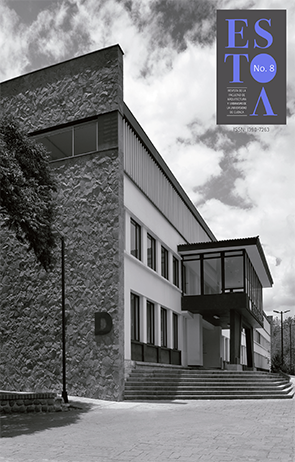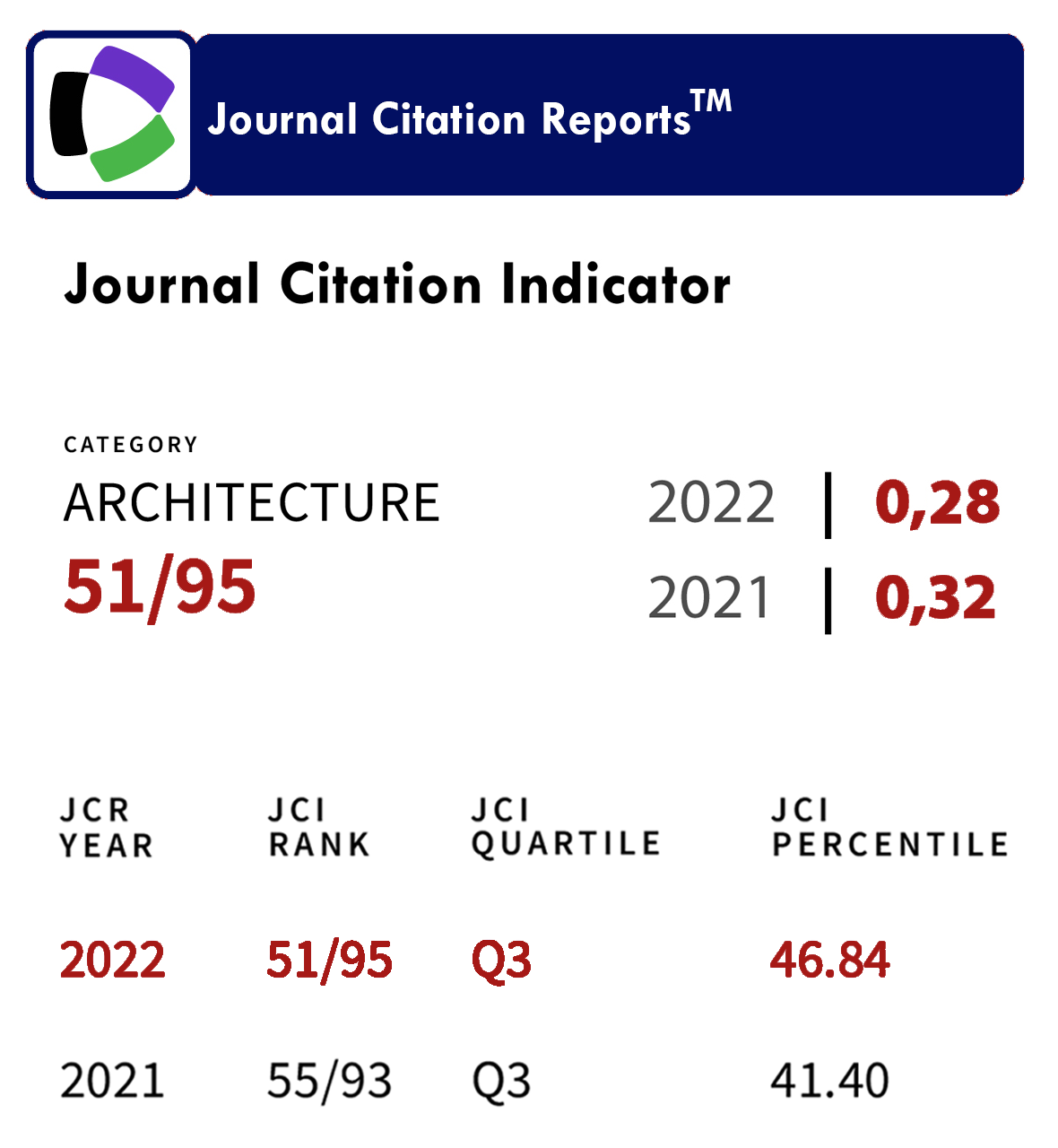Simulation of Natural lighting in offices: comparison of light levels according to season, orientation, color and time: Implications for visual efficiency
DOI:
https://doi.org/10.18537/est.v005.n008.06Abstract
This article focuses on the carrying out of 36 virtual natural lighting simulations, with the purpose to provide an overview of the contributions of the simulation of natural lighting in an office space and describe their results in the light of the rules for visual efficiency, considering seasonal variations, orientation façade, time and color through the use of specialized software. Three seasons were compared at two different times and two orientations (North and South) where only one window was placed. We used Radiance and Autodesk Ecotec software. Our results showed that during winter and facing South the average lighting levels exceed 27 times the values established by the Official Mexican Norm (NOM-025-STPS-1999 Lighting conditions in work spaces) in winter at South orientation at 12:00 hrs. It was also proven that color reflection coefficient plays an essential role in lighting, increasing up to 63% the level of illumination
Keywords: Natural lighting, simulation, orientation, season, color.Downloads
References
Boyce, P. (2003). Human Factors in Lighting. Londres, Inglaterra: Taylor & Francis Group.
Boyce, P. (2011). Illumination: basic definition. International Encyclopedia of Ergonomics and HumanFactors. EdiT by Karwowski W. (2011). Taylor & Francis, New York. 1016-1021
Boyce, P., Hunter, C. & Howlett, O. (2003). The benefits of daylight through windows. Troy, New York: Rensselaer Polytechnic Institute.
Fuentes Romero, J. J. (2000). El edificio de la biblioteca de Viipuri: Alvar Aalto, el humanismo innovador de un hacedor de bibliotecas. In Anales de documentación (Vol. 3, pp. 67-79).
Kaplan, R., & Dana, S. T. (2001). The nature of the view from home: Psychological benefits. Enviorimental and Behavior, 33(4), 507-245.
Kensek, K. & Suk, J. Y. (2011). Daylight Factor (overcast sky) versus Daylight Availability (clear sky) in Computer-based Daylighting Simulations. Journal of Creative Sustainable Architecture & Built Environment, 1, 3-14.
Kliczkowski H. (2002). Alvar Aalto. Madrid, España: Loft Publications.
Kroemer, K. H. E. y Grandjean, E. (2001). Fitting the task to the human. A textbook of occupational ergonomics. Londres: Taylor & Francis.
Li, D. H., Cheung, G. H., Cheung, K. L., & Lam, T. N. (2010). Determination of vertical daylight illuminance under non-overcast sky conditions. Building and environment, 45(2), 498-508.
Li, D. H., & Tsang, E. K. (2005). An analysis of measured and simulated daylight illuminance and lighting savings in a daylit corridor. Building and Environment, 40(7), 973-982.
Li, D. H., Wong, S. L., Tsang, C. L., & Cheung, G. H. (2006). A study of the daylighting performance and energy use in heavily obstructed residential buildings via computer simulation techniques. Energy and Buildings, 38, 1343-1348.
Nussbaumer, L. (2014). Human Factors in the Built Enviroment. Nueva York, Estados Unidos: Fairchild Books.
Ortiz, G. (2004). Uso, aplicaciones y creencias acerca del color. México, D.F.: Trillas.
Ortiz & B. Solórzano (Ed.), Tópicos del Color en México y el mundo. (pp.175-183). México, D.F: Universidad Autónoma Metropolitana Unidad Azcapotzalco.
Velázquez, E. & González, I. (2003). Reglamento de Zonificación del Estado de Jalisco. Guadalajara, Jal. México: Universidad de Guadalajara.
Prado León Lilia R., Ávila Chaurand R. Aceves González C. y González Muñoz E. (2009). Trabajo Con Computadoras. Recomendaciones Para la Salud, Comodidad y Productividad. Guadalajara, México: Universidad de Guadalajara, ISBN 978 607 450 068. 134 pag.
Reinhart, C. F., & Wienold, J. (2011). The daylighting dashboard–A simulation-based design analysis for daylit spaces. Building and environment, 46(2), 386- 396.
Wolska A. Human aspects of lighting in working interiors
PP. 1011-1015. International Encyclopedia of Ergonomics and Human Factors. EdiT by Karwowski W. (2011). Taylor & Francis, New York.
Yáñez, G. (2008). Arquitectura solar e iluminación natural. Madrid, España: Munilla-Lería.
Resene. The paint the professionals use, 2015, recuperado el 1 de Julio de 2015, de http://www.resene.co.nz/swatches/index.php)
Secretaria del trabajo y prevención social, 2015, recuperado 3 junio de 2015, de http://webcache.googleusercontent.com/search?q=ca che:gfRyDTgJsDgJ:www.stps.gob.mx/bp/secciones/dgs st/normatividad/normas/Nom-025.pdf+&cd=1&hl=es&ct=clnk&gl=mx
Published
How to Cite
Issue
Section
License
Copyright (c) 2017 Estoa. Revista de la Facultad de Arquitectura y Urbanismo de la Universidad de Cuenca

This work is licensed under a Creative Commons Attribution-NonCommercial-ShareAlike 4.0 International License.
The Journal declines any responsibility for possible conflicts derived from the authorship of the works that are published in it.
The University of Cuenca in Ecuador conserves the patrimonial rights (copyright) of the published works and will favor the reuse of the same ones, these can be: copy, use, diffuse, transmit and expose publicly.
Unless otherwise indicated, all contents of the electronic edition are distributed under a Creative Commons Attribution-NonCommercial-ShareAlike 4.0 International License.






